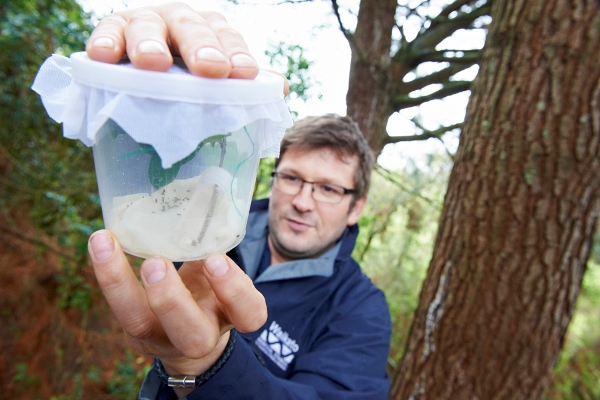Media Release: Waikato Regional Council, 29 September 2015
In a New Zealand first, Waikato Regional Council biosecurity officers have released a bug to help control the privet pest plant.
About 1000 privet lace bugs (Leptoypha hospital) were released last week in a gully near Cambridge as well as near Whenuakite on the Coromandel Peninsula to help contain and reduce the density of privet. There will be a third release of lace bug in the Waikato later this year.
The lace bugs were bred at Landcare Research’s Lincoln facility for Waikato Regional Council and approved for release in New Zealand by the Environmental Protection Agency in May.
The privet lace bug originates from China and has been host-tested in New Zealand prior to the release to ensure they won’t impact on native or significant exotic species, such as olive trees.

“This is a really exciting release and we’re hopeful that over time the lace bugs will multiply and help to reduce the density of privet in the Waikato,” said council biosecurity officer, Hamish Hodgson.
“Over the next two years we’ll be keeping a close eye on the areas where the lace bug has been released. Adult lace bugs suck the sap from the leaves and if they multiply successfully we’d expect to see defoliation resulting in either the plant’s death or poor health.”
Privet is an evergreen shrub or tree that is wide spread in the North Island and in warmer parts of the South Island. It is an environmental pest plant that reduces biodiversity by preventing the regeneration of native species.
“That means in the long term the privet lace bug could also help to increase the amount of native vegetation,” Mr Hodgson said.
Biological control (biocontrol) agents use a living organism to control another. Biocontrol agents have previously been released in New Zealand to help control other pest plant species, with mixed results. However, a beetle released to control ragwort and St John’s wort in the Waikato have been successful, and we’re seeing some promising signs with regard to the tradescantia and Californian thistles.
“Biocontrol agents do take time to establish, but if they breed successfully we would look to collect bugs from the initial sites and release them elsewhere in the region,” Mr Hodgson said.
“Sometimes herbicides are the best and most effective way to control some pest plants. But biocontrol is cost effective, it’s environmentally friendly, and it provides a long term tool for weed control.
“Once established, they travel wherever the weed spreads and can return again and again to kill off new weed growth – all without human input,” Mr Hodgson said.

